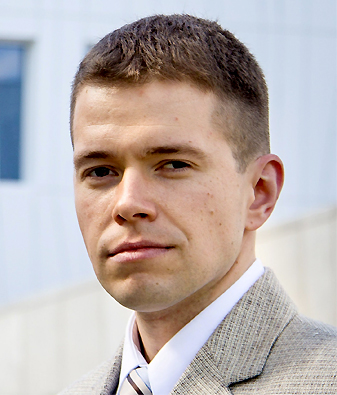New research shows that when searching for a CEO, firms tend to hire from a surprisingly small pool of candidates, most of whom are insiders.
It’s easier than it used to be for people in this position to move from one firm to another: leadership skills — such as communicating with media and shareholders — can be remarkably similar across firms, and the internet allows executives to research and understand the workings of a wide variety of businesses.
However, a working paper entitled The Market for CEOs reveals that the majority of CEOs — who establish strategic vision, make hard decisions and represent businesses in public — are actually insiders: current or former employees of the firm.
Research conducted by Dirk Jenter from the London School of Economics & Political Science and Peter Cziraki, assistant professor of economics in the Faculty of Arts & Science, revealed that more than 80 per cent of CEOs at S&P 500 companies during the period 1993 to 2012 had entered their positions as employees or board members. The figure rose to 90 per cent when outsiders with a prior or board connection were factored in. Only about three per cent arrived at a company after having been poached from another one.

Jenter and Cziraki were initially curious not about how CEOs came to companies — but why they’d left them. “In research presentations, we’d heard it proposed that maybe it’s not that they got fired, but that they got a job at another company,” Cziraki says. “We knew from the data and from talking to practitioners that that’s not what happens. But we didn’t have a paper to point to as a reference.”
One incentive to hire internally may be that such hires are generally paid less, since outsiders need to be lured away from comfortable situations, and might also be fielding offers from other companies. But Cziraki says the pay difference is not as significant as some might think. Internal hires were paid on average about $2 million less per year during the period under analysis — which may seem like a lot, but actually represented well under one per cent of an S&P 500 company’s annual market value.
Familiar faces also reduce a company’s exposure to risk. “Initially when a search process starts, everybody’s most interested in finding someone who thinks outside the box,” Cziraki says, citing numerous conversations he’s had with industry insiders. “But then towards the end, when it’s down to two or three candidates, the risk angle really kicks in … it’s very rare that you get credit on the upside for a hiring decision, but you do get a lot of blame on the downside. So naturally you’re going to be risk averse.”
When corporate boards do hire from outside, he continues, it’s more because a company is underperforming. At that point, the concept of bold and disruptive thinking may seem more attractive.
Given that Cziraki and Jenter were analyzing a period that ended almost a decade ago, will their conclusions continue to be valid over the long haul? Cziraki is confident they will. “I think that since 2012, the way that CEO hiring is conducted has not changed dramatically in terms of procedures, since there hasn’t been an innovation as significant as the internet,” he says. “In our sample period, there was also a tremendous variation in market and industry conditions” — for example, the 2008 global financial crisis, the 1997 Asian financial crisis, and the dot-com bubble — “so we know we were looking at a period with lots of economic ups and downs.”
There have obviously been changes in the economy over the last decade, which Cziraki plans to explore in further research. Two major changes that may affect the hiring of future CEOs: the convulsions caused by the pandemic, and a greater move toward diversity. “There is still a staggering under-representation of women as CEOs, though by the end of our sample it rose from under two per cent to roughly five per cent,” he notes.
Though the pressure on CEOs is enormous and the hours long, the highest-level executives often prefer to stay with their companies. Cziraki says it’s not unheard of for a CEO to step down and assume the role of executive chairman, as Jeff Bezos recently did at Amazon, but it’s also not uncommon to return. “Sometimes what ends up happening is that the former CEO peers over the shoulder of the new person a little bit too much,” says Cziraki, “and then they actually come back. Some people just can’t let go.”

